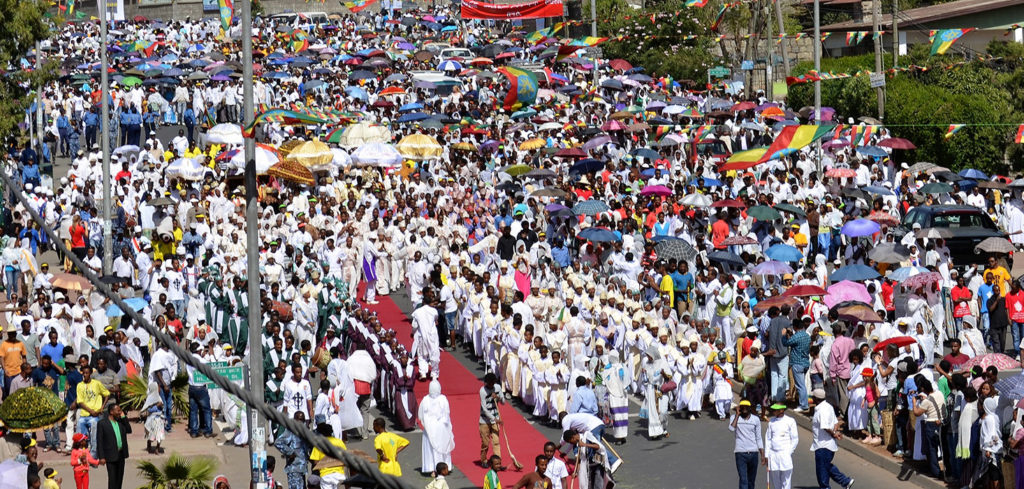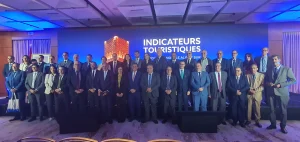The United Nations Educational, Scientific and Cultural Organization (UNESCO) has decided to inscribe Ethiopian Epiphany on its lists of intangible cultural heritage of humanity.
The epiphany celebration was one of the five elements of Intangible Cultural Heritages added by the Intergovernmental Committee for the Safeguarding of the Intangible Cultural Heritage meeting in Bogota, Colombian capital on Wednesday.
The epiphany celebration becomes the 4th intangible cultural heritage of Ethiopia inscribed as world intangible heritage, next to Meskel, the Geda system, and Fichee Chambalaalla.
Ethiopian Epiphany is a colorful festival celebrated all over Ethiopia to commemorate the baptism of Jesus Christ.
The commemoration starts on the eve of the main festival, when people escort their parish church tabot, a representation of the Tables of the Law, to a pool, river or artificial reservoir.
Celebrants then attend night-long prayers and hymn services, before taking part in the actual festival the following day, when each tabot is transported back to its church.
The Ethiopian Epiphany is a religious and cultural festival whose viability is ensured through continuous practice and the pivotal contribution of the Orthodox clergy.
The viability of the element is ensured through its continued practice, with Orthodox clergies playing a pivotal role: they sing the praises dedicated to the rituals and hymns, carry the Ark, and preach relevant texts.
Other than Intangible Cultural Heritages, UNESCO inscribed the ruins of the ancient city of Aksum are found close to Ethiopia’s northern border in 1980. They mark the location of the heart of ancient Ethiopia when the Kingdom of Aksum was the most powerful state between the Eastern Roman Empire and Persia. The massive ruins, dating from between the 1st and the 13th century A.D., include monolithic obelisks, giant stelae, royal tombs and the ruins of ancient castles. Long after its political decline in the 10th century, Ethiopian emperors continued to be crowned in Aksum.
In 1978, UNESCO inscribed the fortress-city of Fasil Ghebbi built in the 16th and 17th centuries. It was the residence of the Ethiopian emperor Fasilides and his successors. Surrounded by a 900-m-long wall, the city contains palaces, churches, monasteries, and unique public and private buildings marked by Hindu and Arab influences, subsequently transformed by the Baroque style brought to Gondar by the Jesuit missionaries.
The fortified historic town of Harar was another tangible heritage in 2006. It is located in the eastern part of the country on a plateau with deep gorges surrounded by deserts and savannah. The walls surrounding this sacred Muslim city were built between the 13th and 16th centuries. Harar Jugol said to be the fourth holiest city of Islam, numbers 82 mosques, three of which date from the 10th century, and 102 shrines, but the townhouses with their exceptional interior design constitute the most spectacular part of Harar’s cultural heritage. The impact of African and Islamic traditions on the development of the town’s building types and urban layout makes for its particular character and uniqueness.
Konso Cultural Landscape is the other Ethiopia’s tangible heritage in 201. It is an arid property of stone-walled terraces and fortified settlements in the Konso highlands of Ethiopia. It constitutes a spectacular example of a living cultural tradition stretching back 21 generations (more than 400 years) adapted to its dry hostile environment.
The landscape demonstrates the shared values, social cohesion and engineering knowledge of its communities. The site also features anthropomorphic wooden statues – grouped to represent respected members of their communities and particularly heroic events – which are an exceptional living testimony to funerary traditions that are on the verge of disappearing. Stone steles in the towns express a complex system of marking the passing of generations of leaders.
The Awash valley Lower and Valley of the Omo are UNESCO’s inscribed heritages of Ethiopia in 1980. The Awash valley contains one of the most important groupings of palaeontological sites on the African continent. The remains found at the site, the oldest of which date back at least 4 million years, provide evidence of human evolution which has modified our conception of the history of humankind. The most spectacular discovery came in 1974 when 52 fragments of a skeleton enabled the famous Lucy to be reconstructed.
1980A prehistoric site near Lake Turkana, the lower valley of the Omo is renowned the world over. The discovery of many fossils there, especially Homo Gracilis, has been of fundamental importance in the study of human evolution.
The 11 medieval monolithic cave churches of this 13th-century ‘New Jerusalem’ are situated in a mountainous region in the heart of Ethiopia near a traditional village with circular-shaped dwellings. Lalibela is a high place of Ethiopian Christianity, still today a place of pilgrimage and devotion. It was inscribed by UNESCO in 1980.
Tiya, which is among the most important of the roughly 160 archaeological sites discovered so far in the Soddo region, south of Addis Ababa, was also inscribed as tangible heritage by UNESCO. The site contains 36 monuments, including 32 carved stelae covered with symbols, most of which are difficult to decipher. They are the remains of an ancient Ethiopian culture whose age has not yet been precisely determined.
Source:ezega.com







